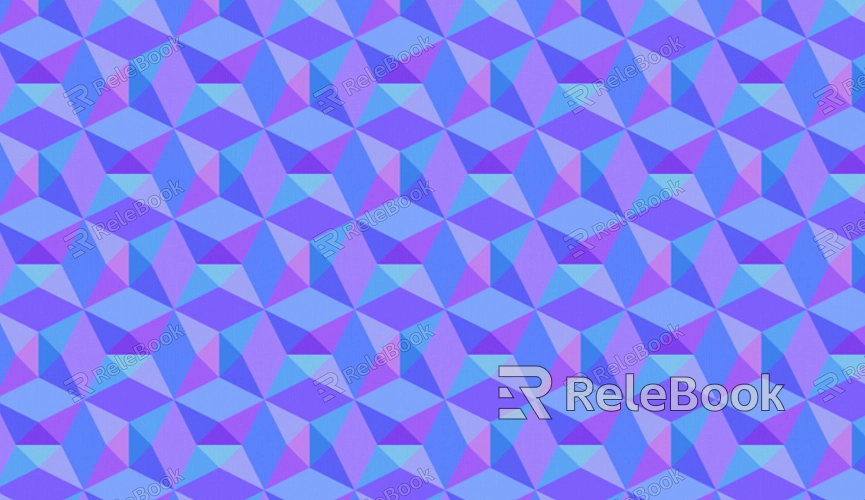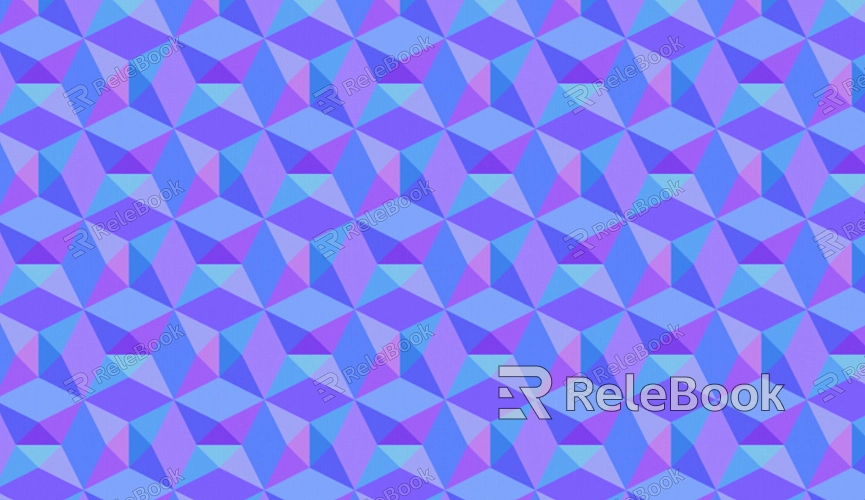How to Create Custom UV Maps in Maya?
In modern 3D production, UV mapping is a crucial element for applying surface details to virtual objects. By properly mapping UVs, designers can ensure textures are applied perfectly to a model's surface, enhancing the visual realism and richness of the model. In Maya, creating custom UV maps is an essential and fundamental skill, enabling you to add intricate textures to characters, props, or environments. This article will walk you through the process of creating custom UV maps in Maya, from basic UV unwrapping to advanced texture editing and application.

Basic Concepts of UV Mapping
Before diving into the specifics of how to create custom UV maps in Maya, it’s important to understand the basic concept of UV mapping. UV mapping refers to the process of unwrapping a 3D model's surface into a 2D plane so that a 2D texture can be mapped onto it. This process is akin to “cutting open” parts of the model's surface and flattening them out into a 2D grid where you can paint or apply textures.
An ideal UV layout should avoid stretching and overlapping and make efficient use of texture space. This ensures that textures are applied evenly across the model’s surface, contributing to a more detailed and high-quality final render.
Creating UV Maps in Maya
The first step in creating custom UV maps is to generate a UV map for the model. Here’s a step-by-step guide on how to do this in Maya:
1. Import or Create Your 3D Model
Start by ensuring you have a 3D model to work with. If you’re a beginner, you can create a simple cube or sphere within Maya to practice. Alternatively, you can import an existing model, such as a character or prop.
2. Select the Model and Enter UV Editing Mode
Select the model you want to map. In Maya, go to the "UV" menu and enter the UV editing mode. Typically, you'll use Maya’s “UV Editor” to view and manipulate the UV map.
3. Automatic UV Unwrapping
For simple models, Maya offers an automatic UV unwrapping feature. Select your model, and click the “Automatic Mapping” or “Automatic UV Unwrap” option from the “UV” menu. This method uses algorithms to unwrap the model’s surface, which works well for basic UV layouts.
4. Manual UV Mapping
For more complex models, automatic unwrapping may not give optimal results. In this case, you’ll want to manually adjust the UVs. Start by choosing the right “cutting” method to flatten the model’s surface. You can use the “Cut UV” tool to slice the model into segments, making it easier to unwrap.
“Cutting” the model’s surface adds seams, allowing the model to be unfolded into a flat 2D plane. Depending on the model’s structure and shape, you may need to carefully place these cuts to ensure that the resulting UV map doesn’t distort or overlap.

Optimizing the UV Layout
After generating the basic UV map, the next step is to optimize it to ensure the texture details are evenly distributed across the model’s surface. Optimizing the layout involves adjusting UV islands, avoiding overlap, minimizing stretching, and making the best use of texture space.
1. Checking for UV Overlap
Use Maya’s "UV Editor" to check for overlapping UVs. Overlapping UV areas can cause texture application errors. You can use the "UV Overlap Check" tool to automatically detect these issues and then manually adjust the positions of the UV islands to ensure there’s no overlap.
2. Scaling and Moving UV Islands
Using the "UV Editor" tools, you can move, scale, and rotate each UV island. Properly utilizing texture space can maximize the resolution of your texture, which is crucial for high-quality models. Especially for complex models, making sure each part of the model has enough space in the UV layout is key.
3. Minimizing UV Stretching
UV stretching occurs when a UV map is distorted, which can result in texture blurring or uneven detail. To minimize stretching, use the “Relax UV” tool or manually adjust the UV islands to make sure they match the model's surface more accurately.
4. Creating Proper UV Cuts
For complex models, creating well-placed UV cuts is essential. Good cuts reduce texture distortion and help the model’s surface display more naturally from different angles. For character models, consider the anatomy to create cuts that follow natural lines on the body, making the UV layout more intuitive and manageable.
Texture Painting and Application
Once your UVs are set up, the next step is to apply textures to the model. This process typically involves these steps:
1. Painting the Textures
You can paint textures using external tools such as Photoshop or Substance Painter, or directly in Maya using the “Paint Textures” feature. In these tools, textures will be laid out according to the UV map you’ve created. Make sure the texture aligns with the UV layout to avoid misalignments or stretching.
2. Importing the Texture into Maya
Once you’ve painted your texture, return to Maya and import it through the “Hypershade” editor. You will need to assign the texture to the model’s material. In the material editor, adjust the texture mapping to ensure it applies correctly to the UV coordinates of the model.
3. Fine-Tuning Details
Sometimes, textures may not appear as expected on the model. In this case, you can adjust the UV coordinates or tweak the material settings for better results. If you’re working with PBR (Physically Based Rendering) materials, you’ll also need to adjust various texture channels like roughness, metallic, and normal maps to achieve a more realistic effect.
Creating custom UV maps in Maya is a process that requires patience and attention to detail. From basic UV unwrapping to advanced texture painting and refinement, every step plays a critical role in achieving a high-quality 3D model. By mastering these techniques, you’ll be able to create detailed and realistic models for your projects. If you want to take your skills further, visit Relebook’s website to download a wide range of 3D models and textures to help you enhance your creative journey.
FAQ
Why does my UV map have stretching or distortion?
Stretching or distortion often occurs when unwrapping a model with complex details or shapes. To avoid this, ensure that you consider the model’s surface structure when creating cuts, and try to use even and logical cutting methods.
My model’s textures are overlapping. How do I fix it?
UV overlap can lead to incorrect texture display. You can use Maya’s UV overlap check tool to detect these overlaps, and then manually adjust the positions of the UV islands to prevent them from overlapping.
Why do my textures not display correctly on the model?
Incorrect texture display may happen if UV coordinates are misaligned or the texture resolution is too low. Make sure the texture resolution is sufficient for your model and verify that the texture mapping in the “Hypershade” editor matches the UV map.

